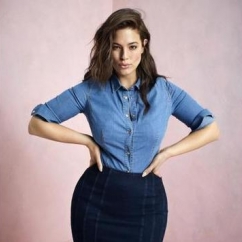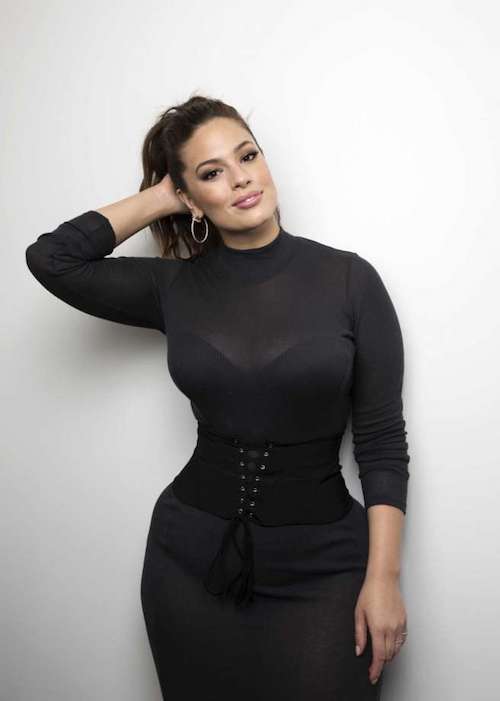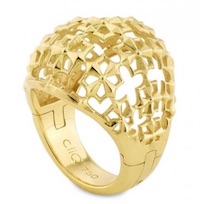Articles and News
Luxury Industry’s Size Snobbery Is A Jeweler’s Opportunity | May 16, 2018 (0 comments)

Merrick, NY—Disruption may be changing many things about retail, but apparently it hasn’t changed old-fashioned snobbery from luxury fashion brands that simply don’t want to see their clothing on larger women. But the luxury fashion sector’s plus-size problem could translate into a great sales opportunity for jewelers to take back some of the money left on the table during all the years our industry paid little attention to female self-purchase. (Left, leading plus-size model and spokesperson Ashley Graham. Image: NBC).
Best of all, jewelers can easily serve this market with almost no additional operating or merchandising costs.
More than two-thirds of American women wear above a size 14, while plus sizes (those above size 16) account for about 10% of apparel sales. But the luxury sector is paying almost no attention to this customer whatsoever. A sampling of luxury brands finds many don’t even go up to a US 14; stopping instead at a size 10 or 12. So right there, these brands are alienating at least 2/3 of their potential customer base—and if their 10s and 12s are cut on the slim side, it’s more like ¾ of their potential customer base.
That means that jewelers have a perfect opportunity to recoup some of the female self-purchase money that has been going to other accessories like designer handbags while the jewelry industry treated self-purchase as an afterthought. And on the eve of the Las Vegas shows, adding in some jewelry to fit a larger customer is a category worth adding to the shopping list.
Let’s do some math. According to multiple estimates, women control over $20 trillion in world-wide spending. American women alone are estimated to control between $5 trillion and $15 trillion (yes, with a T) annually. If we assume the low end of that range, two-thirds of $5 trillion equals $3.2 trillion (still with a T) being spent annually by women who wear a size 14 or above. If we assume the higher end, that’s more like $9.6 trillion.
Admittedly, only some of that money is going to be spent on clothing, or even accessories or jewelry. The total apparel market in the United States in 2017 was approximately $329 billion, which means that if plus sizes account for about 10% of apparel sales, that’s $32.9 billion. Fashionista.com estimates the plus-size apparel market in 2016 was about $21.4 billion, growing at about 6% annually.
$11 billion disparity aside, that’s still a lot of money for luxury brands to turn down.
Related: New And Surprising Intelligence About Women, Millennials, And Diamonds
Right now, the luxury sector is doing well—growing at about 7% a year—but surely the fire sales of the Great Recession haven’t faded entirely from memory just yet?
Or maybe they have. Whatever the reason, the sector continues to snub its nose at the plus-size customer. Trendsetting designer and doyenne Miuccia Prada summed it up in a recent interview with Women’s Wear Daily, in which she takes the luxury fashion industry to task for its self-righteous claims of inclusiveness while rarely featuring more than one plus-size model in any runway shows (not to mention that in fashionspeak, size 10 is plus-size).
Size diversity is trendy, she said, but most designers only pay lip service with a token plus-size model. “It’s a joke. It’s just to pretend to be good. It’s pretentious…I think it’s hypocritical.” Hypocrisy and political correctness aren’t for her, she says. But neither is sizing up. “Size diversity…in theory I accept, but so far I didn’t have really the courage to do it,” she told WWD before her recent resort 2019 show.
Meanwhile, Chanel head designer Karl Lagerfeld, who after dropping almost 90 pounds himself became notorious for unrepentant weight-shaming, has suddenly done an about-face: his second-tier accessibly priced Karl Lagerfeld Paris brand just launched a capsule collection of plus-size clothing in collaboration with subscription service StitchFix.
Luckily for jewelers, tapping into this market is extremely easy, and requires little, if any, investment or changes in merchandising strategy.
One reason why accessories sell so well is that they’re much less size dependent than apparel—but it still doesn’t mean one size fits all. And if you want to win the plus-size customer over, don’t go on the theory that one size fits most, either. Nothing kills a sale faster than a customer enthusiastically trying on a piece that doesn’t fit. By the time you offer to size it, she’s already disappointed and some of the magic went out of the moment.
Style-wise, this customer wants the same thing everyone else does: what's fashionable and what suits her personal aesthetic. Whatever her size, women all want to wear what they feel best in, whether her style is classic, casual, bohemian, or anything in between.

Ashley Graham accents a black dress and corset belt with fairly classic diamond hoops and rings (left ring and pinky fingers).
Related: Trendspotting: The Jewelry Looks Your Customers Are Seeing (And Seeking) Now
From your end, simply make sure you stock your best-selling styles in extended sizes that fit on the first try: that means size 8 and 9 (or more) in rings, size 7.5, 8, and larger in bracelets, and earrings with longer posts or wider openings. If it’s too big on her, no worries: if it’s a best-selling style you should already have it in smaller sizes.
Especially be sure to stock some hoop earrings with wider openings (or open hoops on a post) and put longer posts on all your earrings (you can always snip some off if necessary.) Stock lots of disc stabilizers and other fit hacks to keep larger earrings sitting straight. If your customer is admiring delicate little necklaces or dainty poesy rings, you’re in luck: the layered look is au courant and piling a few on will ensure she doesn’t feel like a diminutive piece gets lost on her. Pieces that are larger overall but with delicate detailing like filigree also are a good choice.
For rings, make sure it’s not her knuckle that’s interrupting the fit: a ring sized to go over a large knuckle can slip around once it’s in place on the finger, whereas a hinged shank style fits neatly at the base of her finger without having to accommodate the knuckle.

"Romanesque" filigree dome ring from Cliq opens to accommodate a large knuckle, yet sits snugly at the base of the finger.
When it comes to marketing, you don’t have to single her out as a plus-size customer. Market to her as you do all your female self-purchase customers: women with a sense of style and disposable income to indulge it. Mix in images of curvy women in jewelry on your social media and consider pairing up with a clothing store and supplying the jewelry for larger size clothing displays or fashion shows. The only difference is that when she comes into the store, you have things in stock that will fit her on the first try when you pull them out to show her.







